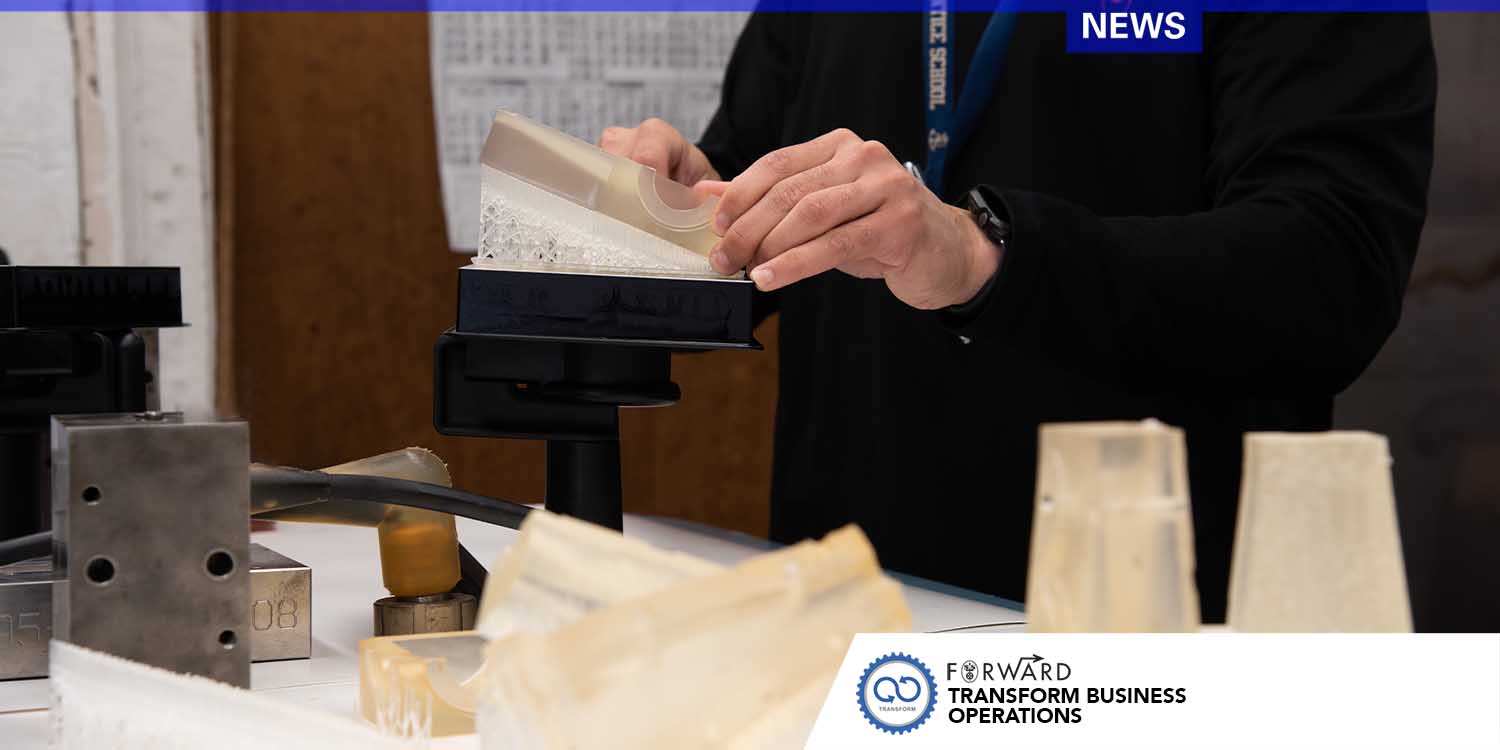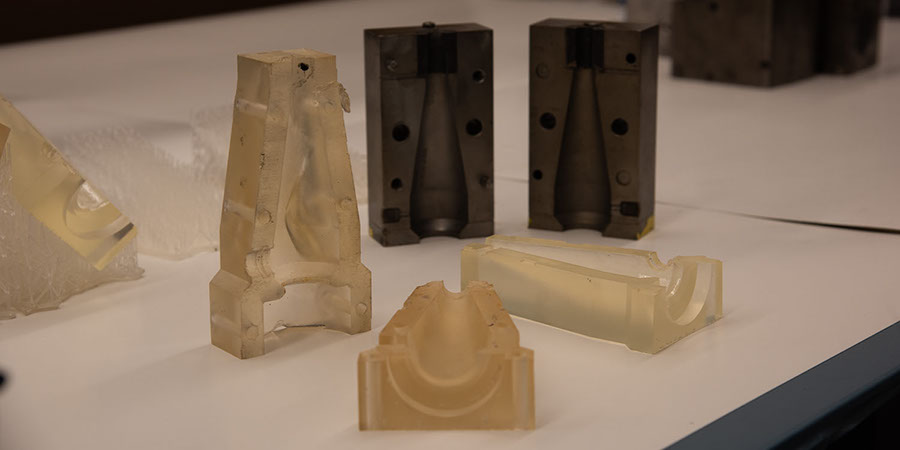 Photo by Matt Hildreth
Photo by Matt Hildreth
Embracing Additive Manufacturing
Published March 16, 2021
Newport News Shipbuilding’s Rubber Shop is taking a leap into the 21st century, using additive manufacturing – or 3D printing – to make shipbuilders’ jobs safer and more efficient.
Shipbuilders in the shop have traditionally used metal molds for the injection molding process to create waterproof plug ends on cable assemblies. These metal molds are heavy, expensive and make it impossible to identify defects such as air bubbles or cable movement during the injection process.
A few months ago, shipbuilders asked if there was a way to see what’s happening inside the molds during the injection process to help reduce rework and improve turnaround time. That’s when Industrial Engineering got involved and found that 3D printing is commonly used by injection molding manufactures. The team used existing 3D printers at NNS and a specialized resin capable of withstanding the heat generated from injection molding to print a series of test molds to validate that this could work.
“These molds proved the team could identify multiple defects at the time of injection molding,” said Industrial Engineer Anthony Ugoletti.
With the support of Electrical, Sheet Metal, Hangar and Pad (ESHP) management, the shop purchased two 3D printers, which allowed shipbuilders to print the semitransparent molds in house. The 3D-printed molds are manufactured for about $100 each and take approximately 16 to 20 machine hours to produce. A metal mold can cost between $3,000 and $7,000 each. It can take six months to a year to secure funding and manufacture a metal mold.
The 3D-printed molds also are significantly lighter, an important improvement since a shipbuilder may have to carry several molds and their tools on to the ship.

“This has been a great improvement, we’re constantly improving the mold designs with the feedback of the craftsmen, and we’re actually trying to scale it up. We can’t print every single mold the shop uses right now because some of them are too big for the printers we have,” Ugoletti said. There is already a funding request for additional printers to accommodate larger molds.
Roderick Square, Tommy Norwood, Lewis Anderson and Corey Hill, who are using the new molds admit they were initially skeptical.
“I didn’t think it was going to work. I just didn’t see benefit of being able to see through while you were shooting the plug,” Anderson said. “When I actually used it, I could see the benefit.”
Hill agreed. “We’re still working the kinks out, but I think it’s going to be the wave of the future,” he said.
“Now that we’re at this point, it’s almost a no-brainer. Giving the shipbuilders a way to see inside the molds is a huge improvement and is helping to improve the shop’s quality,” said Foreman Loveist Jacobs.
The Rubber Shop is using the 3D-printed molds for cable assemblies to support work on Los Angeles-class submarine USS Boise (SSN 764) and Virginia-class submarines.